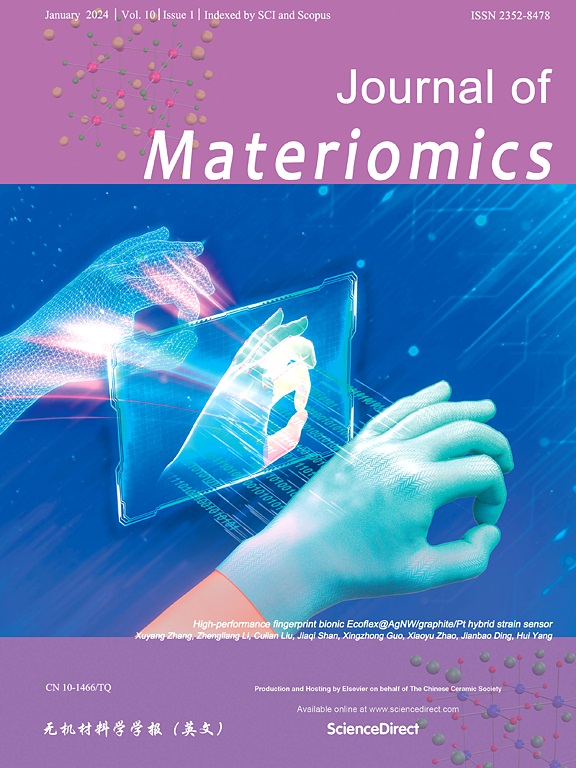One-dimensional potassium sodium niobates (1D KNN): Performance optimization and application prospects
IF 9.6
1区 材料科学
Q1 CHEMISTRY, PHYSICAL
引用次数: 0
Abstract
One-dimensional (1D) nanostructures of perovskite piezoelectrics exhibit unique properties that distinct them from those of their bulk and thin-film counterparts. These 1D nanostructures feature cantilever-like flexibility and elasticity, a relatively high piezoelectric constant, good stability and easiness of integration, making them highly promising for applications in energy harvesting, pressure sensing, piezo-catalysis, nano-actuators and smart human-machine interfaces. Among them, (K,Na)NbO3 (KNN) has been regarded as one of the most promising lead-free perovskite piezoelectrics owing to its excellent biocompatibility, good piezoelectric performance, and high Curie temperature. Recently, significant efforts have been made to develop high-performance 1D KNN nanostructures (1D KNNs). However, the controllable growth and enhancement in piezoelectric performance of 1D KNNs remain challenging. In this work, we systematically re-examine the effective approaches for the growth of 1D KNNs and explore their unique properties. Key strategies for structural designs and performance optimization are proposed based on the recent progress, along with perspectives in developing novel functionalities and micro/nano-devices such as energy harvesters, information storage, electronic skins, biomedical applications.


一维铌酸钾钠(1D KNN):性能优化及应用前景
钙钛矿压电材料的一维(1D)纳米结构表现出独特的性能,使其与体积和薄膜材料区别开来。这些一维纳米结构具有悬臂式柔韧性和弹性、较高的压电常数、良好的稳定性和易于集成的特点,在能量收集、压力传感、压电催化、纳米致动器和智能人机界面等方面具有很大的应用前景。其中,(K,Na)NbO3 (KNN)由于其优异的生物相容性、良好的压电性能和较高的居里温度,被认为是最有前途的无铅钙钛矿压电材料之一。近年来,人们在开发高性能一维KNN纳米结构(1D KNNs)方面做出了巨大的努力。然而,一维KNNs压电性能的可控生长和增强仍然具有挑战性。在这项工作中,我们系统地重新审视了一维knn生长的有效方法,并探索了它们的独特性质。基于最近的进展,提出了结构设计和性能优化的关键策略,以及开发新功能和微/纳米器件(如能量收集器,信息存储,电子皮肤,生物医学应用)的前景。
本文章由计算机程序翻译,如有差异,请以英文原文为准。
求助全文
约1分钟内获得全文
求助全文
来源期刊

Journal of Materiomics
Materials Science-Metals and Alloys
CiteScore
14.30
自引率
6.40%
发文量
331
审稿时长
37 days
期刊介绍:
The Journal of Materiomics is a peer-reviewed open-access journal that aims to serve as a forum for the continuous dissemination of research within the field of materials science. It particularly emphasizes systematic studies on the relationships between composition, processing, structure, property, and performance of advanced materials. The journal is supported by the Chinese Ceramic Society and is indexed in SCIE and Scopus. It is commonly referred to as J Materiomics.
 求助内容:
求助内容: 应助结果提醒方式:
应助结果提醒方式:


